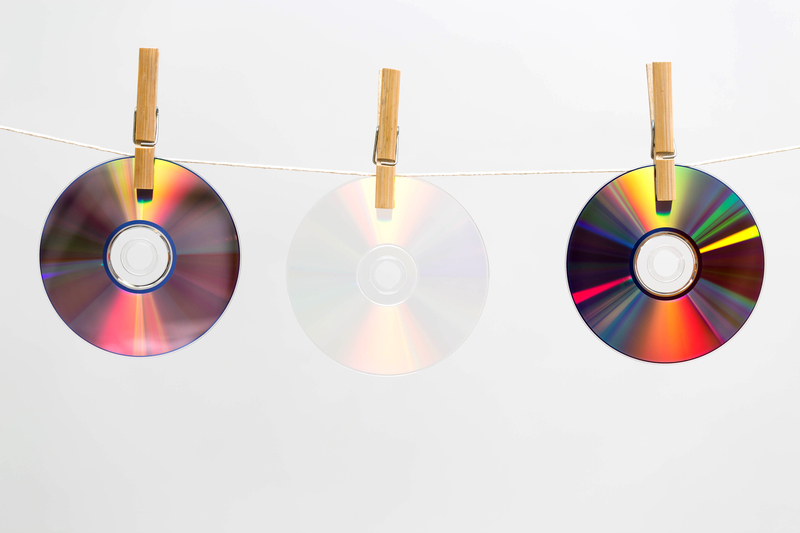Simple Routines to Mindfully Get Rid of PPE
Personal Protective Equipment (PPE) has become an essential part of our daily lives, especially since the global pandemic. From disposable face masks and gloves to gowns and face shields, these essential barriers protect us--but they also generate waste. Improper disposal of PPE not only harms the environment but also poses a health hazard. That's why it's crucial to learn simple routines to mindfully get rid of PPE.
In this comprehensive guide, we'll cover best practices for disposing of PPE, ways to build habits for responsible disposal, and key insights into environmental impacts. Whether you're an individual, a business owner, or a healthcare professional, these easy-to-follow routines will help you dispose of PPE safely and sustainably.

Why Is Mindful PPE Disposal Important?
PPE has played a pivotal role in protecting individuals and communities. However, the surge in its use has led to new environmental challenges. Every week, billions of masks, gloves, and wipes are discarded globally. Without proper disposal, these items end up in landfills, oceans, and other ecosystems, causing pollution, injuring wildlife, and potentially spreading pathogens.
- Health Hazards: Improperly discarded PPE can transmit viruses and bacteria.
- Environmental Impact: Most PPE is not biodegradable and contributes to plastic pollution.
- Legal Consequences: In some regions, there are fines for improper PPE waste disposal.
Mindful and responsible practices ensure the safety of people and the planet. Let's delve into effective routines to get rid of PPE thoughtfully.
Step-by-Step Guide: Simple Routines for Disposing of PPE Responsibly
1. Choose the Right PPE Disposal Bin
- Designated PPE bins: Use bins specifically marked for PPE materials. These bins are often found in public places and healthcare settings.
- Color coding: Typically, red or yellow bins are used for potentially infectious waste.
- At home: Dedicate a separate, lined trash can or bag for your used PPE.
By segregating PPE waste from general trash, you reduce the risk of contamination and make it easier for waste collectors to handle.
2. Safely Remove and Bag Your PPE
- Gloves: Pinch the outside of one glove and peel it away from the hand, turning it inside out.
- Masks: Remove using the ear loops or ties--never touch the front of the mask.
- Face shields/goggles: Remove from the back and clean if reusable, otherwise dispose.
Pro Tip: After removing your PPE, place it straight into the designated bag or bin. Avoid setting used items on surfaces.
3. Seal the Waste Bag Securely
- Once your dedicated PPE disposal bag is full (or after each use), tie it securely to prevent leaks or accidental spills.
- For extra precaution: Double-bag the PPE waste, especially if it's contaminated.
Sealing the bag is a critical step in preventing the spread of infectious agents.
4. Wash Your Hands Immediately
Thoroughly washing your hands after handling used PPE is essential. Use soap and water for at least 20 seconds, or use hand sanitizer with at least 60% alcohol.
5. Dispose of the PPE Waste as Directed
- Follow local guidelines: Many areas have specific disposal rules for PPE. Check with your council or waste service provider.
- Never litter PPE: Avoid throwing masks, gloves, or wipes on the ground or in public spaces.
Note: Never flush PPE items--they can clog drainage systems and pollute waterways.
Building Habits for Mindful PPE Disposal
Developing responsible routines makes proper PPE disposal second nature. Here are some practical habits to incorporate into your daily life:
- Keep disposal bags handy: Carry a small, sealable bag in your purse, backpack, or car for used PPE when you're on the go.
- Educate others: Encourage your family, friends, and coworkers to dispose of their PPE properly.
- Set reminders: Set phone alerts to remind yourself to take out the PPE waste or restock your disposal supplies.
- Reuse when possible: Opt for reusable masks and face shields if conditions allow, and wash them regularly.
Creating a PPE Disposal Station at Home or Work
Make responsible PPE disposal easy by setting up a dedicated station in a convenient location.
- Use a foot-operated, lined bin to minimize contact.
- Place hand sanitizer nearby for immediate use after disposal.
- Keep signage with easy-to-follow disposal steps for guests or employees.
A clearly labeled and accessible station helps ensure everyone follows safe routines for getting rid of PPE.
Reducing Your PPE Environmental Footprint
While correctly discarding PPE is essential, it's also important to reduce overall PPE waste when possible, without compromising safety.
- Choose reusable options: Fabric masks and washable gowns can significantly cut down waste when used appropriately.
- Support recycling initiatives: Some companies and communities now offer PPE recycling programs for items like masks and gloves.
- Buy in bulk: Purchasing in bulk can reduce packaging waste and lower the frequency of trips to buy PPE.
- Stay informed: Keep up to date with new eco-friendly PPE materials on the market.
Myths and Facts about PPE Disposal
-
Myth: "Masks and gloves can be recycled with household plastics."
Fact: Most single-use PPE is not recyclable in normal facilities and must be disposed of as general waste or in dedicated PPE recycling streams. -
Myth: "It's safe to burn PPE at home."
Fact: Burning PPE can release toxic chemicals and is dangerous. Use proper waste channels. -
Myth: "Biodegradable PPE solves the waste problem."
Fact: While helpful, even biodegradable PPE needs to be disposed of correctly to break down safely.
The Global Perspective: PPE Waste and Our Planet
With millions of PPE items tossed away daily, the environmental consequences are significant. Ocean life is especially at risk with masks and gloves found in waterways worldwide. By adopting simple routines to get rid of PPE mindfully, you play an important part in breaking this cycle of pollution.
Case Study: Successful PPE Waste Reduction Initiatives
- Hospitals segregate PPE waste from other medical waste, ensuring it goes directly to appropriate facilities.
- Cities like London and Singapore are piloting special PPE recycling bins in high-traffic areas.
- Organizations run public education campaigns about PPE disposal, reducing littering and contamination.
These real-world examples show that systemic change starts with individual routines and community action.
What Not to Do: Common PPE Disposal Mistakes
- Littering masks or gloves in public places--a risk to cleaners, wildlife, and the environment.
- Flushing PPE items down the toilet--can block sewage systems and cause overflows.
- Mixing used PPE with recyclables--can contaminate the entire recycling stream.
Avoid these mistakes to guarantee safer and more sustainable PPE disposal routines.
FAQs About Safe PPE Disposal
What should I do if my area has no PPE-specific waste collection?
If your city or region lacks dedicated PPE disposal, place used PPE in a sealed bag and dispose of it with regular trash. Do not mix it with recyclables.
Can I compost biodegradable masks or gloves?
Only compost items that are verified as home-compostable by the manufacturer. Even then, ensure they aren't contaminated by pathogens.
Is burning PPE at home safe?
No. Burning PPE can release hazardous toxins. Always use professional waste management services.

Summary: Small Routines, Big Impact
Learning simple routines to mindfully get rid of PPE is more important now than ever. Responsible disposal protects your community, keeps the environment clean, and sets a positive example for others. Remember to:
- Designate a special bin or bag for used PPE
- Remove and handle PPE carefully--avoid touching contaminated surfaces
- Seal waste bags securely
- Wash hands thoroughly after disposal
- Follow local guidelines for waste management
- Educate those around you and promote safe habits
Every effort counts. By integrating these responsible routines into daily life, you contribute to a healthier, cleaner, and more mindful world.
Further Reading and Resources
- EPA Guidance on PPE Disposal
- CDC Resources: Safe Disinfecting and PPE Handling Tips
- WHO: Safe Management of Wastes from COVID-19
Start today--make your PPE disposal habits simple, safe, and sustainable!
```